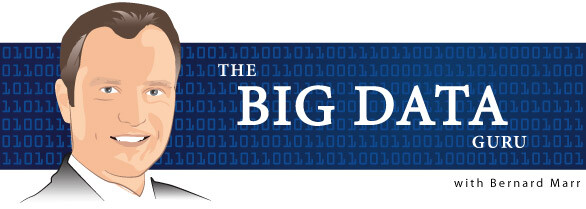
The use of data in football (or soccer as my American friends prefer to call it) – the most popular sport in the world – has seen huge growth in recent years. The sport is beginning to more fully realize the power of performance analysis and apply objective information more efficiently to gain genuine competitive advantage.

The use of data in football (or soccer as my American friends prefer to call it) – the most popular sport in the world – has seen huge growth in recent years. The sport is beginning to more fully realize the power of performance analysis and apply objective information more efficiently to gain genuine competitive advantage.
The widespread use of advanced data in soccer may be a relatively recent development, but statistical analysis of the game is nothing new. In fact, the first known experiment was carried out in the 1950s by Charles Reep, a trained accountant, RAF Wing Commander and fan who pioneered notational analysis in sports.
Reep’s simplistic but significant analysis focused on passing moves that led to goals, yielding the valuable insight that most goals were scored following a chain of three or fewer uninterrupted passes. He may occasionally be blamed for the British game’s fixation with direct play, but he established the general principles that past performance is a good indicator of future performance and that the collection of data can aid with the recreation of past situations that led to successful outcomes. These principles remain the cornerstones of effective analysis in soccer.
Despite Reep laying the groundwork for basic analysis sixty years ago, it wasn’t until the late 1990s that the use of video and data to inform performance began to gain traction in the sport. Pioneered by Prozone (www.prozonesports.com), systems to support more detailed pre and post-match analysis gradually emerged, Derby County being the first club to adopt the technology in 1998.
Within a few short years there had been a paradigm shift, with the majority of clubs at the top level of European football adopting structured analysis processes and dedicated performance analysts. Where once clubs had to rely on grainy VHS footage to conduct even the most basic analysis, they were now able to access high-quality footage and a wealth of accompanying statistics at the click of a button.
Today, all Premier League football stadiums in the UK are equipped with a set of digital cameras that track every player on the pitch. Ten data points are collected every second for each of the 22 players on the pitch, generating 1.4 million data points per game. Prozone analysts will then code the data to identify every tackle, shot or pass in order to enable managers and performance analysts gain insights of what exactly happened in each game, on and off the ball.
In training sessions, players also wear GPS trackers, acceleration sensors and heart rate monitors to analyze their training performance and optimize their preparation. Such tracking devices are currently not allowed in live games but provide vital stats for anything that happens outside the actual match. Some clubs have even started to combine their training and game performance analytics with data from tracking other aspects of their players’ lives, such as diet and sleeping habits.
The first phase of the performance analysis revolution saw teams acquire analysis technologies and competencies, but now the focus has moved towards how the available data is used and implemented. With clubs now operating in a data-rich environment and having access to a wealth of resources designed to interpret the numbers, the basic use of data is no longer enough to maintain a competitive advantage.
In the modern game, the use of data is all about finding the extra 1%, the detail that can exploit even the slightest weakness in the opposition and make the difference between winning and losing. Rather than simply applying data to tactical performance, objective information is now used throughout the clubs to enhance efficiency and develop processes that enable the organization to be as well-prepared as possible from the pitch to the boardroom.
To help clubs to derive greater insights from their data and achieve competitive advantage, Prozone has just launched their Performance.LAB services. Working in the areas of game intelligence, tactical profiling, athlete monitoring and asset management, Prozone’s analysts and data scientists are constantly developing new ways of assessing performance on and off the field. Today, the data can be used to better define playing styles, quantify player abilities, to measure passing vision and reduce injury risk.
Will the game suffer if it becomes as much a contest between the analysts off the field as the players on it? I think that’s highly unlikely. The outcome is always going to be dictated by the efforts and intuitive skill of the players during the 90 minutes, but with the financial pressures increasing clubs are getting smarter about how they use data to achieve that competitive advantage.